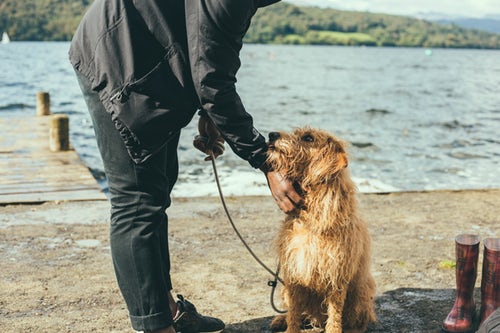Well, feeling isolated or alone is common in humans. Did you know that your canine friend also experiences similar emotions? Like humans dogs can get upset if their loved ones leave, dogs also get sad when their pet parents are away.
Sometimes, it is important to be aware of identifying why your dog is feeling the way he is. Could it be that he is feeling sad from being alone or does it signal something serious?
Relax. We have made a list of the symptoms from which you can easily identify if your dog can have separation anxiety. You can then take steps to reduce his anxiety and make him calm down.
Symptoms of Separation Anxiety
Usually, dogs keep whining and making noises once they are alone. But dogs showing signs of separation anxiety, not only whine but are prone to self-destructive behavior as well. They can even display self-harming behavior like injuring themselves while attempting to enter into or escape from any place, dirty the house, break up household items.
They can be excessively vocal and may even become picky eaters or may not eat properly at all. Too much salivating and panting can happen to elderly dogs and puppies with separation anxiety. For puppies, if you try to crate and train them, they may not respond properly.
In fact, many of these behaviors can be signs of other underlying diseases which makes separation anxiety hard to identify and diagnose.
So, if you see your normally well-behaved pooch, relieving himself on your brand-new rug, it may be separation anxiety or even incontinence at work. Excessive panting may hint at dehydration which is a medical condition warranting attention.
How You Can Help Ease Separation Anxiety in Your Dog
Once you identify these odd and repetitive behaviors, try to determine if they are exhibited only when your friend is alone or even otherwise. It is also vital to rule out medical conditions arising from his age and personality.
In the case of separation anxiety, the desire to escape from a place signifies destructiveness. So, when he chews up your favourite Jimmy Choo’s, he is not exhibiting any medical condition but just being himself!
If your absences are consistently increasing and you see him chewing and tearing up the wallpaper, it is a clear sign of separation anxiety. He does that as he wants to escape from the room.
Now, if we start thinking about why a dog possibly does that, there can be many reasons. The Humane Society of the United States mentions few reasons like being left alone after an extended period together with their pet parents, taking the time to adjust to a new kennel or any sudden changes in any household routines.
Activities to Better Manage Separation Anxiety
Let’s see what little steps you can take to put your little buddy at ease and help him be himself again.
- If you are planning to board him at a kennel for a week, take him there for a day and let him get familiar with the surroundings.
- Give him an old t-shirt of yours, covered with your scent and a couple of his favourite chew toys to play with at the kennel to make him comfortable.
- In case of any major changes in home situations, spend time with him and lavish your attention to make him feel safe.
If your canine friend is already diagnosed with separation anxiety, let’s see what steps you can take.
- Help him rise above his fear.
- Understand his behavior and specific cues you may be exhibiting and modify them to put your buddy at ease
- Schedule a meeting with a dog trainer or dog behaviorist to figure out what aspects can help shape your friend’s behavior
- Once you take him to the veterinarian, he may be prescribed anti-anxiety medications as well.
- Spend some time with your pet outdoors to give him ample physical activity and exercise-walks, play outdoors gives your pet good confidence to tackle various things.
- Keep indoor play mentally stimulating with toys so that he gets used to playing by himself regularly
Shower time and attention on your loving pet and make sure he feels absolutely loved and cared for.
Speak to your vet and design an action plan to get your dog back to normal. With both of you making enough efforts, your dog will soon be a relaxed and happy dog when he is alone.
